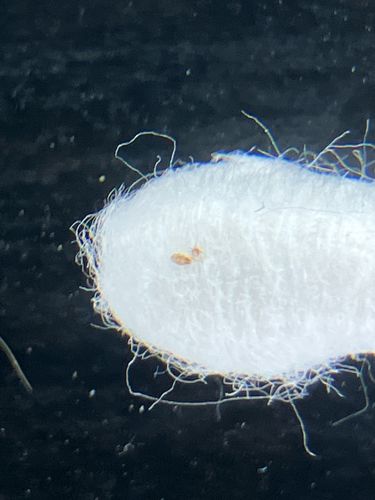Booklouse / Psocid
Scientific Name: Various species within Psocoptera (e.g., Liposcelis spp.)
Order & Family: Order: Psocoptera, Family: Liposcelididae (for common house booklice)
Size: 0.5 mm to 2 mm (very small, often appearing as tiny specks)

Natural Habitat
Damp, warm, and dark places with mold or starchy food sources, such as stored food products, books, old papers, wallpaper, crevices in walls, and humid environments. They thrive in relative humidities above 60-70%.
Diet & Feeding
Fungi, mold, starch (e.g., book bindings, wallpaper paste, flour, cereals), insect fragments, and sometimes dead insects. They do not bite humans or animals.
Behavior Patterns
They are typically active in areas with high humidity and food sources. They are non-social insects that can reproduce rapidly under favorable conditions. Many species are parthenogenetic, meaning females can reproduce without males. They tend to scurry away when disturbed. Their presence often indicates high moisture levels in an indoor environment.
Risks & Benefits
Risks: Can be a nuisance pest in homes and museums, damaging books, documents, and stored food products. While generally harmless, large infestations can cause concern. They do not transmit diseases. Benefits: Play a role in breaking down organic matter in natural environments. In homes, their presence can serve as an indicator of excess moisture and potential mold growth issues.
Identified on: 9/17/2025